Tropical Birds by Francois Nicolas Martinet. Fantastic, 18th century, originally hand-colored engravings, from Histoire des Oiseaux, of birds of paradise, rollers, and other exotics found in the tropics and sub-tropical climates.
Tropical Birds by Francois Nicolas Martinet, 1770-1783
Francois Martinet had a passion for birds. Not only was he a naturalist but he was an excellent engraver. So from 1770-1783 he hired of an enormous staff of 70 people, that worked an astounding 13 years to create the most magnificent work on Ornithology ever produced by the French. It was an encyclopedic compilation of every known bird, from the most remote places in the World to birds found on the European continent.

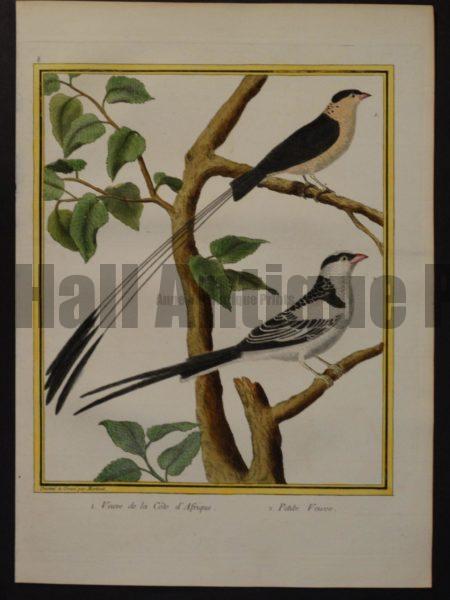



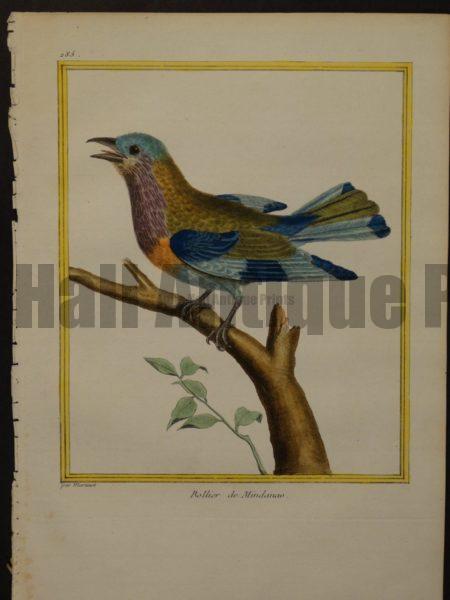
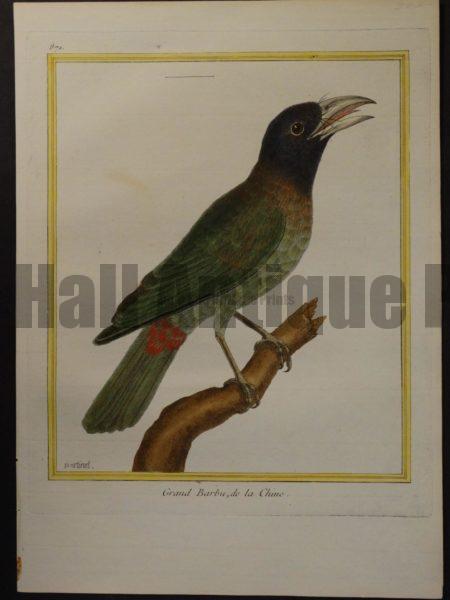
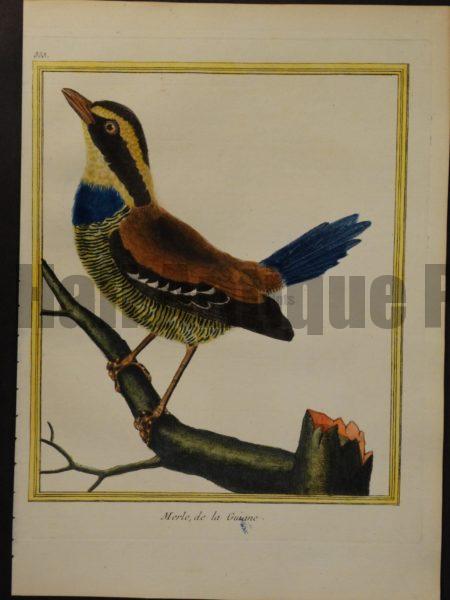

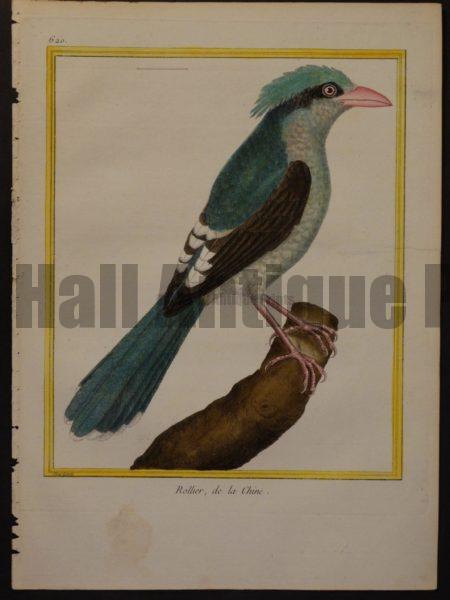
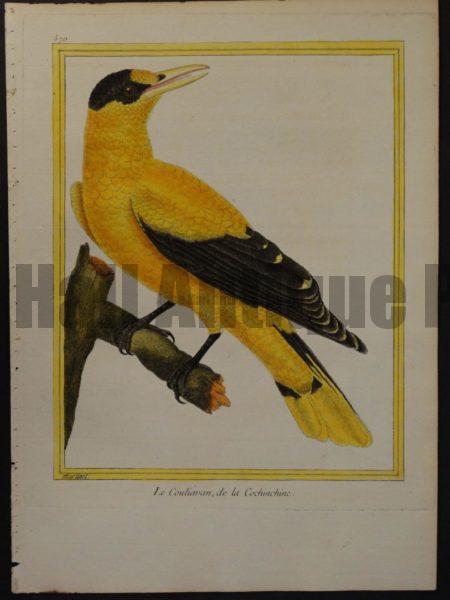

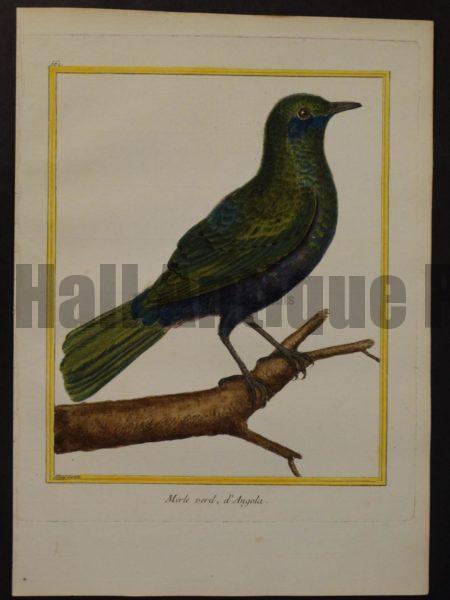


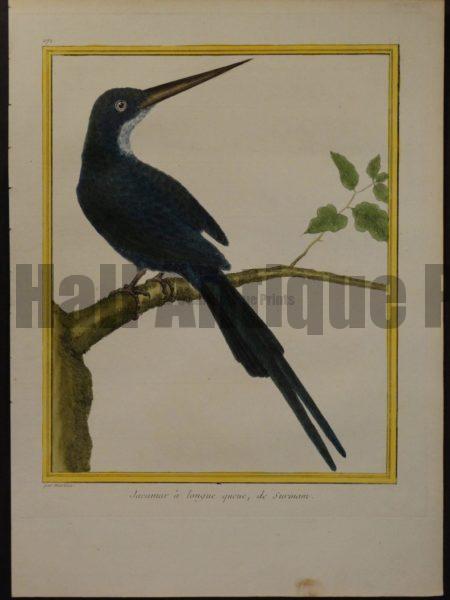
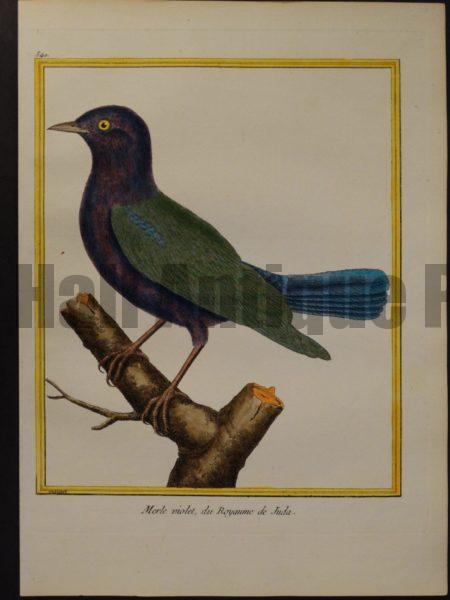


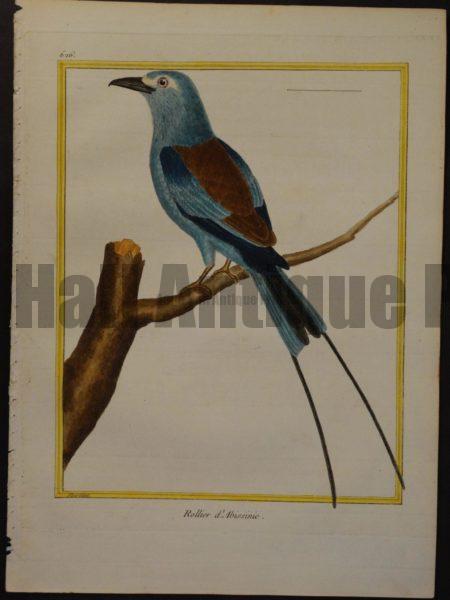
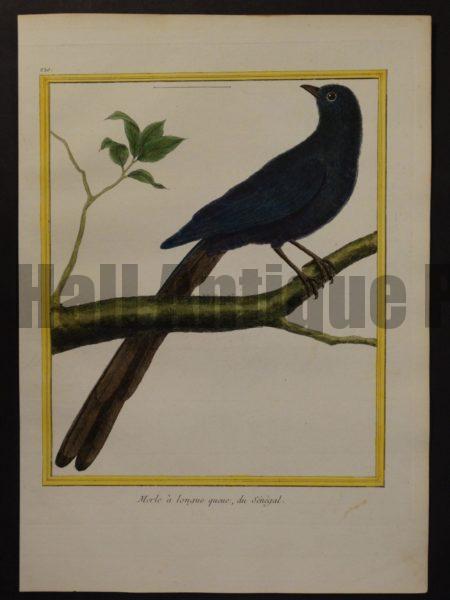


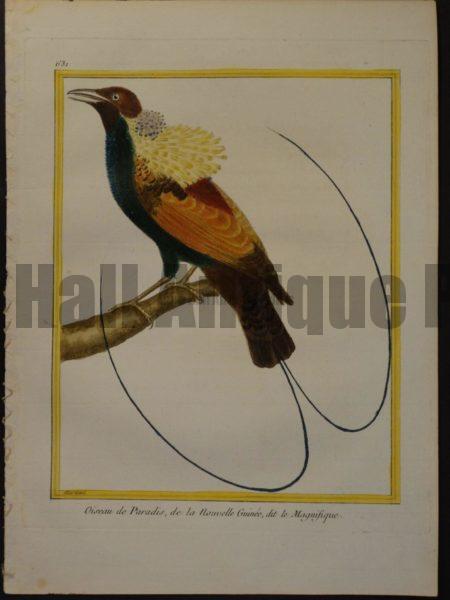



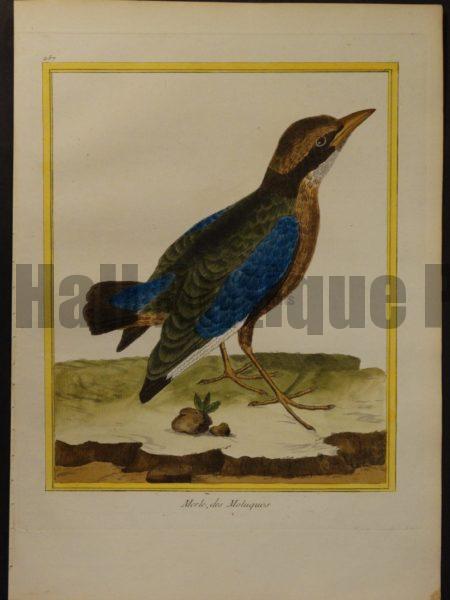

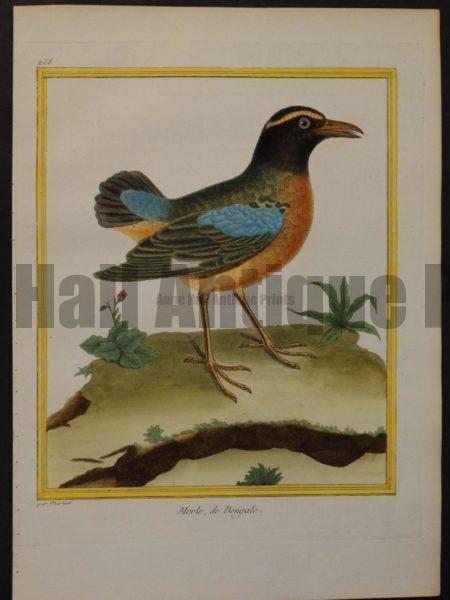

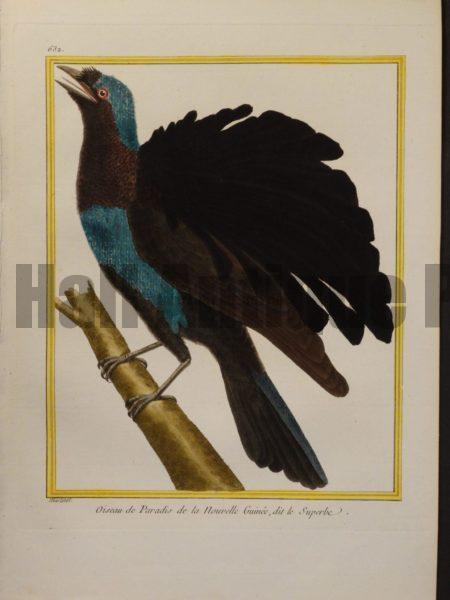
See Parrots, See Orchids, See Buy Now Parrots Contact us with your interests about tropical birds by Francois Nicolas Martinet at 413-145-4197 or email us at Anne@AnneHallAntiquePrints.com
18th century book publication, was a complex craft of many experts.
Generally an encyclopedic study like this was funded by Royalty, Clergy and Medical Doctors, etc. Expeditions with naturalists aboard military ships, collected specimens drew illustrations making pertinent notations were taken in the field. Once all of the information was gathered an author wrote the book. In this case Francois Martinet with George LeClerc Buffon, Compte de Buffon.
Each part of bookmaking required lifelong tradesmen: naturalists, publishers; paper makers; engravers; water colorists, and so on… Paper was perhaps the hardest part of the equation to get a hold of. It required high end rag, 100% cotton, flax or linen to produced good quality hand made rag paper. Not many people could afford new rags (clothing) to wear, as we do today.
This rare work entitled Histoire des Oiseaux included tropical birds by Francois Nicolas Martinet and even Birds of Paradise. It was a work supervised entirely by Martinet himself. He also did most of the engraving! The illustrations were transferred onto a thin sheet of copper, attached to a board and meticulously engraved with burins. When the paper was slightly damp, the engraving was inked up and printed onto a slightly damp piece of paper, where it impressed into the paper, thus the word engraving. Meticulous and professional water coloring was added. Text was printed. Finally compiled and bound by a bookbinder.
Natural History & Life in the 1700’s
Natural History curiosities or museums, displayed collections of newly discovered species of animal and plant life. The public wanted to learn about all the new discoveries, so the museums were opening. Before Museums opened, the way to learn about scientific and natural history discoveries was to open a book, with plates, like these antique prints of tropical birds by Francois Nicolas Martinet which offered by subscription, in parts. This is the way life was during the mid 18th Century. It was entertainment and enlightenment for the well to do. Thank you for visiting!
